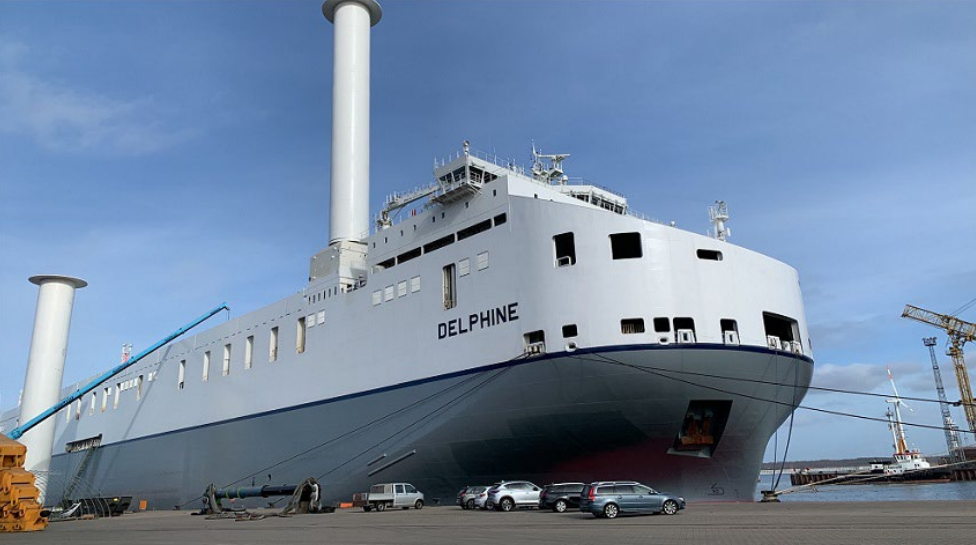DELPHINE has become the first vessel in the CLdN fleet to receive a rotor sail wind propulsion system.
Improving the ship’s fuel efficiency and reducing carbon emissions, the ship returns to service from Zeebrugge on 27 February.
DELPHINE has a freight capacity of over 8,000 lane metres and was already very fuel efficient. With two 35m x 5m rotor sails, current emissions of 28 grammes of CO2 emitted per tonne of cargo shipped per km travelled will be reduced by 10%.
The rotor sails, which can be installed on new vessels or retrofitted on existing ships, incorporate a modernised version of the Flettner rotor, a spinning cylinder that uses the Magnus effect to harness wind power to add forward thrust to a ship. The solution is fully automated and detects whenever the wind is strong enough to deliver fuel and emission savings, at which point the sails start automatically. The sails are also tiltable, allowing the vessel to pass under bridges and maintaining operational flexibility.
CLdN will work with the Maritime Technology Division at Ghent University to study the performance of the sails on the DELPHINE in the coming months. The results of the project will determine roll out on existing and newbuild vessels.
Photo: CLdN

